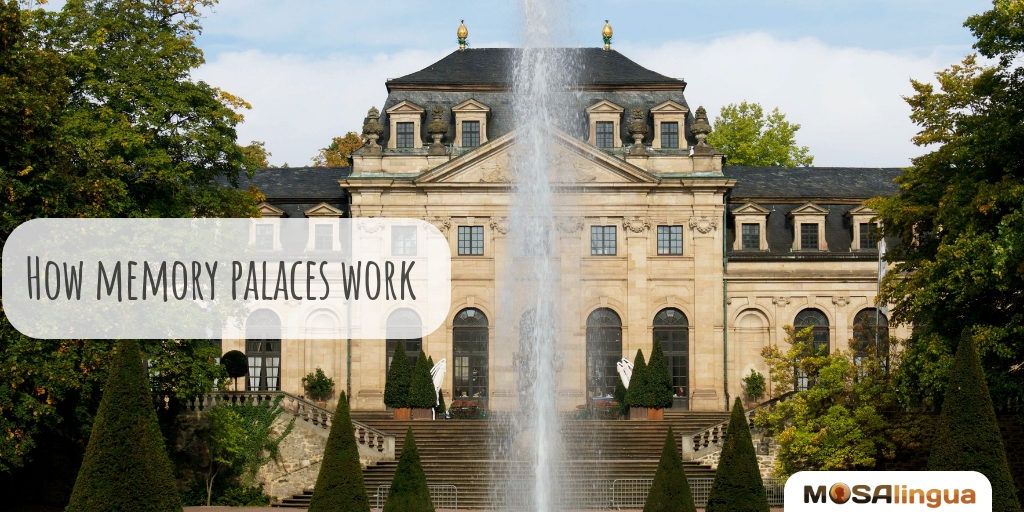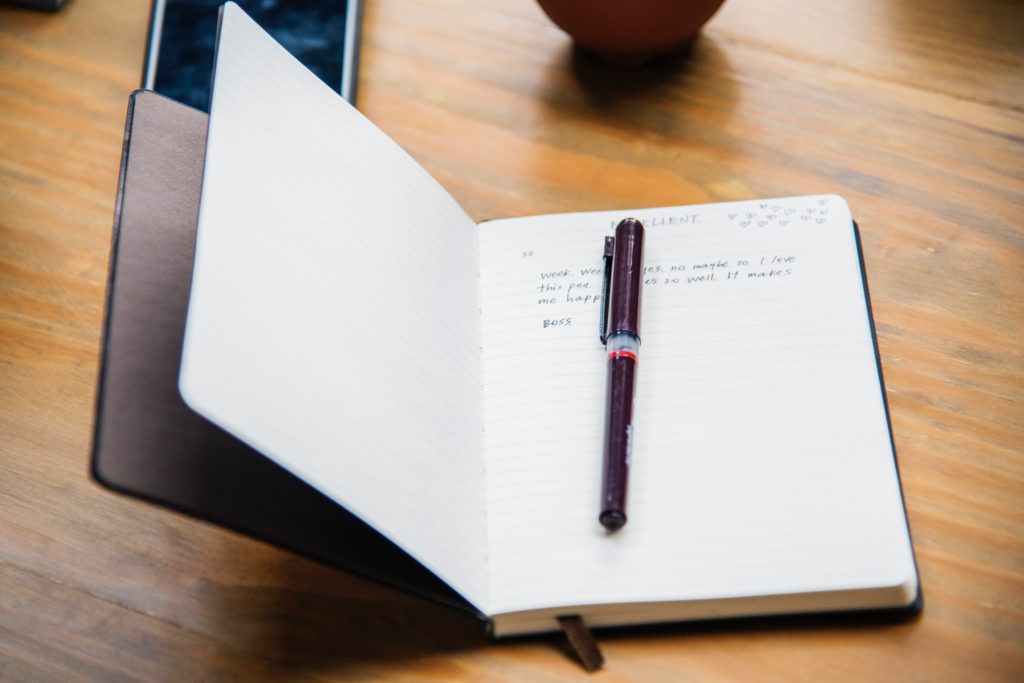Would you like to create and use Memory Palaces at a faster pace and with greater levels of accuracy and recall?
If so, I’d like to show you how. The path to improvement begins with reframing how we think about the so-called “method of loci.”
I’m not an official memory scientist (just a dude with a PhD in Humanities), but I’ve discovered something profound in the research I’ve conducted, my own personal practice, and spending countless hours pouring over the feedback from my students. It is this:
What we’re really talking about when we’re talking about the method of loci or creating a Memory Palace is “location-based mnemonics.”

Guest Blog: How Memory Palaces Work
I find this term more useful for two reasons:
1) You are using remembered locations as a form of association
This helps unlock information we mentally encode at that location using other mnemonic tools (persons, actions, objects, sounds, feelings, linguistic tricks, and other cognitive pyrotechnics).
2) This mental activity helps chemically encode information in a location-based way in the brain
Of course, you can’t see where exactly in the brain we are encoding the information, but it seems fair to say that when using a Memory Palace, we’re involving ourselves in not just how the information is stored by the brain, but where it gets stored.
Why does all this matter?
Simple:
Many people labor over the Memory Palace as a visual creation in the imagination. But we can reduce the visual requirements of the Memory Palace so significantly that they barely draw upon any mental resources. This means that we experience reduced cognitive overload and can direct those resources at better and more effective encoding.
I assume that many people reading this guide will already be familiar with Memory Palace creation and even developed different styles.
For the benefit of those readers for whom the Memory Palace is new, let’s step back and revisit the basics so we can see how to create well-formed Memory Palaces that reduce cognitive overwhelm instead of increasing it. I’ve seen countless times over the years that by getting this part of the location-based art of memory optimized from the beginning, many more successes have been experienced by people who otherwise would have found the technique frustrating to the point of uselessness.
Memory Palaces Explained
A Memory Palace is a made-up place in your mind. Typically, it should be a real place. For example, if you can imagine your kitchen in your head, then you can create a Memory Palace.
Why a “real” location?
Although you certainly can create imaginary Memory Palaces (and some people do really well with them), for many of us, this just creates cognitive drain. Not only do you need to recreate the imaginary Memory Palace each and every time you use it, but you have to spend time creating it in the first place. This creates dozens of decisions that simply basing the Memory Palace on a real building eliminates.
Assuming you’re using a real building, the next task is to assign “stations” to a journey. I use the word “stations” or “Magnetic Stations” for the simple reason that so many people are confused by “loci.” They ask, “Is the Memory Palace the loci, or are the individual stops the loci?” Perhaps adding another term to the lexicon only increases the confusion, but I’ve found that it has been helpful for many, particularly because we can use a few different kinds of stations and then assume that the Memory Palace is never “the” station, but rather the mental device in which we create a journey made from stations of different kinds.
Put it on paper first
One way that I’ve helped myself and other students make Memory Palaces more effective is to get them out of the mind and onto paper before remembering them.
For example, I could use a simple drawing of one of the high schools I attended.
I’ve given each station in this Memory Palace a number. I’m using predominantly the corners of the rooms rather than elements within the rooms. I do this because it not only reduces cognitive load, but also makes the decision-making process easier. I already know that almost every room has four corners, so it’s just a matter of noting whether the journey from corner to corner takes place clockwise or counterclockwise.
This same simplicity helps later during encoding because there’s next to nothing that requires thought after encoding one piece of information (a card, a word, a name) and then moving on to the next. The logic of the building’s architecture and the time I spent drawing the Memory Palace already tell you what comes next when you use this simple approach.
Likewise, this simplicity helps with the speed of practicing recall. By being able to navigate a “no-brainer” Memory Palace journey and decode its contents quickly, you help ensure that you remember the information with greater accuracy, either for short term recitation at a contest or with multiple visitations to enter information into long term memory. It’s a lot more fun and exciting too when you have optimized Memory Palace journeys like these.
Navigating your Memory Palace
Plus, when your journeys are well-structured, you can take advantage of the Serial-Positioning Effect in an interesting way. We know that the Primacy Effect and Recency Effect tend to make information we’ve encountered first and last easier to recall. One problem with Memory Palaces for long term recall is that students tend to always rehearse their journeys from the beginning to the end.
But when you’ve created your Memory Palaces in a way that makes navigation easy, you can quickly navigate forwards, backward, “skip” over the even stations some of the time and leave out the odd stations other times. You can also pop into the middle of the journey and navigate to the start or end or execute other patterns, such as visiting stations 1, 10, 9, 2, 8, 3, 7, 4, etc. It might seem silly to do this, but you are in effect giving great Primacy and Recency to all parts of the journey and each unit of information you’ve stored.
Please note that the smaller the Memory Palace, the easier it is to execute these recall patterns. But you can also perform these repetition sets within individual rooms or clusters of rooms without needing to include the entire Memory Palace.
Let’s review:
Step 1: Pick a building that you know and design a floor plan
You can choose your house, church, school, or even a movie theater. Any building will work as long as you’re familiar enough with it to draw out the floor plan.
Step 2: Create a linear path using your floor plan
Memory Palaces are best used when you don’t put yourself into a dead-end or cross your path. This includes the typical locations like the living room, bedroom, kitchen, bathroom, in addition to an entry point. But please avoid cramming every possible station into your first palace. I call this behavior acting out of “Memory Palace Scarcity.” You can always create more Memory Palaces. Creating them is great brain exercise and if you dig your wells before you’re thirsty, you’ll never be caught without the perfect Memory Palace for many occasions that will arise.
Step 3: Create a top-down list of stations in a linear order
This might seem unnecessary because you know the location well. However, by putting the stations into words, you process them in your mind and memory at another level. And in turn, encoding and decoding is simple and fast. This is another reason you should select buildings with which you have a degree of familiarity.
Step 4: Review your Memory Palace by mentally walking around the floor plan of the Memory Palace multiple times to recall or see every station
Congrats on creating your very first Memory Palace!
From this point on, it’s just a matter of practicing encoding. To do so, design images that are bright, large, weird, colorful, and full of intense and exaggerated action. Place the images on, beside, or perhaps even under the stations inside your Memory Palace. Then, revisit them following the patterns I’ve suggested to practice decoding them. This activity will rapidly encode the information into long term memory.
Once you’ve done this a few times, creating a well-formed Memory Palace takes just a few minutes. As you become more proficient in building them, this method will help you grow as a practitioner of the memory arts. There are certainly other ways of going about Memory Palace creation, and I’ve got many more ideas to share. Come visit me sometime at www.magneticmemorymethod.com. Until then, happy memorizing! 🙂
This guest post was written by Anthony Metivier from magneticmemorymethod.com
Related posts:
Start learning a new language today

Good news: we can help!
More good news: you can get started for free! Start your free trial now and for the next 15 days, take advantage of the most effective language learning method on the market!
Vocabulary flashcards, videos with subtitles, audiobooks, articles adapted to your level – with MosaLingua Premium (Web & Mobile), you’ll have access to all this and more. Get started right now. It’s free—and risk-free—to try!





Comments